Estimated reading time: 28 minutes.
April/2017 – The A6500 is an unexpected Sony E-mount mirrorless camera. Unexpected because it arrives just a few months after the A6300, maybe the most popular camera from 2016, and already brings two significant updates to the Alpha APS-C lineup: the SteadyShot INSIDE, a 5-axis built-in stabilizer made to compensate for hand’s movement; and a touch-sensitive LCD panel, mandatory now on the smartphone era. A lineup made for shooting action, the A6500 also brings a new front-end LSI (large scale integration) that efficiently connects the EXMOR image sensor to the BIONZ X processor, promising a more robust operation, with less heat for longer continuous shooting sessions (the buffer is 4X larger); or during 4K capture. Although largely keeping the A6300’s 4D Focus system, with 425 phase-detection points and a predictive algorithm, the A6500 is better suited for heavier loads, something the older model failed to deliver. fut For US$1398 body-only, the A6500 is US$400 more expensive than the US$998 A6300. Is it worth the price now that it touches Fuji’s X-T2 market, or even Canon’s 7D Mark II price-point? Let’s find out! Nice reading.
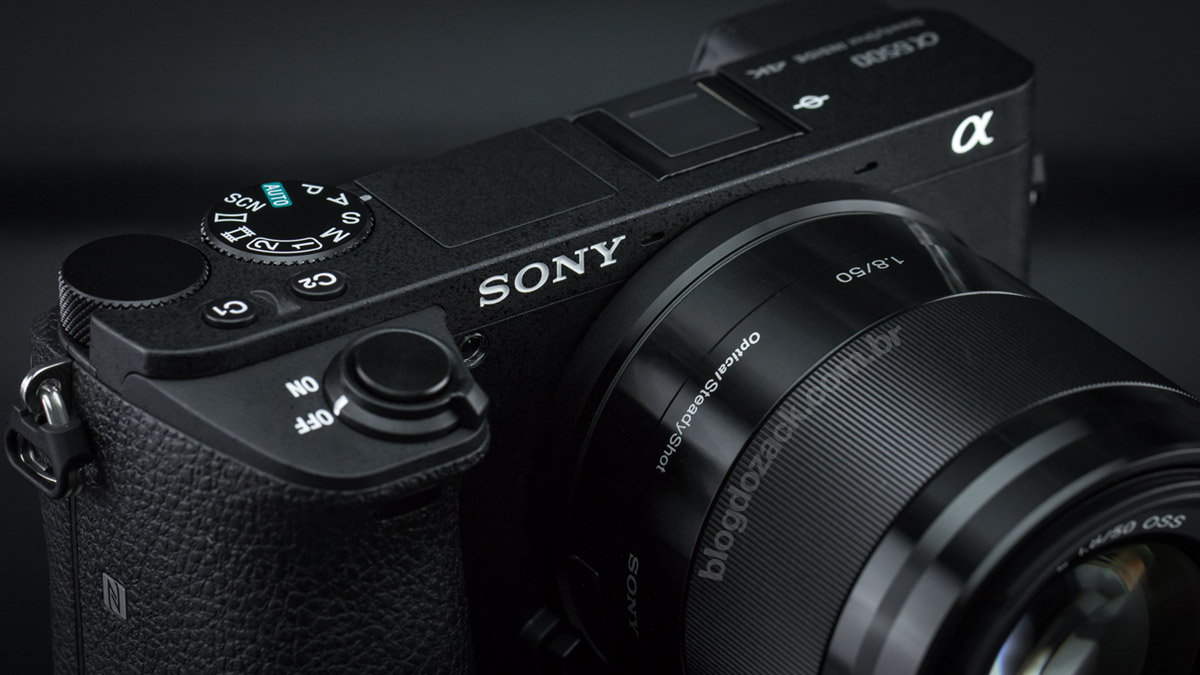
At 11.8 x 5 x 6.6cm of 453gr of metals and plastics, with battery and memory card, the Sony A6500 is practically the same size as the A6300, despite getting the new internal stabilizer. As the full frames A7II (regular, R and S) grew when they got the SteadyShot INSIDE in 2015 (compared to the classic A7 cameras), I was expecting the same to happen to the A6300>A6500, but that didn’t happen. They’re both (A6300/A6500) built inside a solid magnesium body, much superior to other APS-C mirrorless (wait the for the Canon EOS M5 review), and the solid feel enhanced on the A6500: Sony declares reinforcing the E-mount’s base, plus adding a new 200.000 cycles shutter (when used in first-curtain mode). Sony was clearly aiming the Canon’s 7D Mark II, or even Nikon’s D500 when it designed the A6500, all cameras suited for action photography, and not just everyday snapshots.

Being the same size as the A6300, in your hands the A6500 ergonomics are virtually the same. The whole button orientation serves for the right-hand side, albeit with a deeper grip that unfortunately still doesn’t allow for a single-handed operation; we need more dials for that. Just like the A6000 and the A6300, the A6500 sports a clean top panel with recessed dials, much different from Fuji’s X-T2 dial pletora, that enhances the camera’s durability in case of impact (that are no pieces to pop out of place). While Sony’s recessed dials offer questionable usability, being hard to turn just by the finger’s side traction, they got a new XXX engraved texture, better than the slippery A6000/A6300 “|||” finishing. What we loose in usability we gain in portability, and no APS-C camera is more complete and more capable than Sony’s A6#00 lineup; a standout on the crowded market.
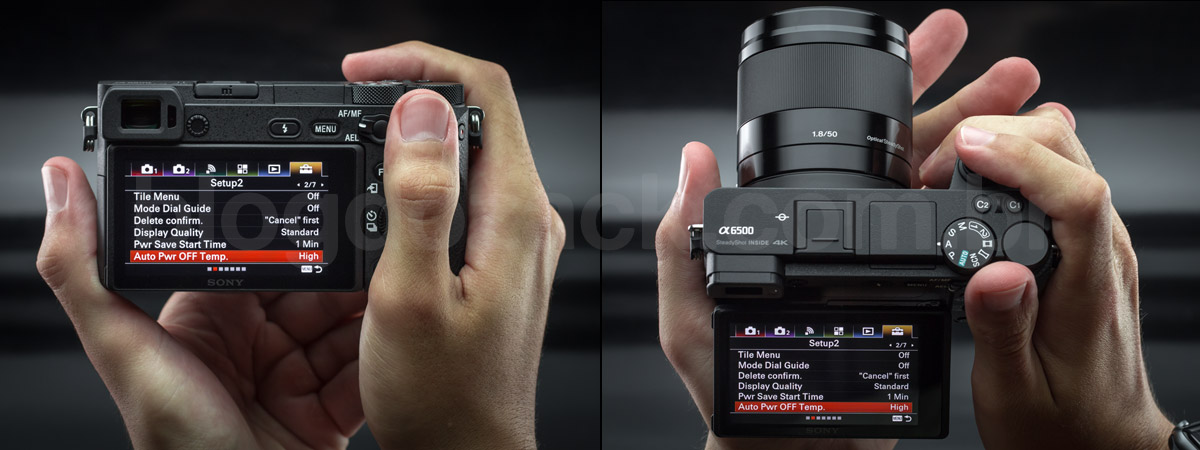
On the right-hand side the diminutive grip is surprisingly comfortable. While on every A7II the right-hand grip is too small to balance larger full frame lenses, on the A6500 it’s deep and molded enough to support almost every finger: the index finger at the top, near the larger (compared to the A6300) shutter release button; the middle and ring fingers at the front, bent around the grip and forcing the camera against the rear thumb; with only the pinky under the camera body, not really giving any support. This grip is more than enough to support the light E-mount APS-C lenses, and puts to shame the skinny Fuji X-Pro 2 and X-T2, that needs larger handgrips as accessories. Although we still don’t get a frontal built-in dial like the A7II, at least the A6300 C1 button was relocated to the top, gaining a new, twin C2; just like the A7IIs. It’s possible to customize virtually any camera setting, speeding up operation using with just these two top buttons.
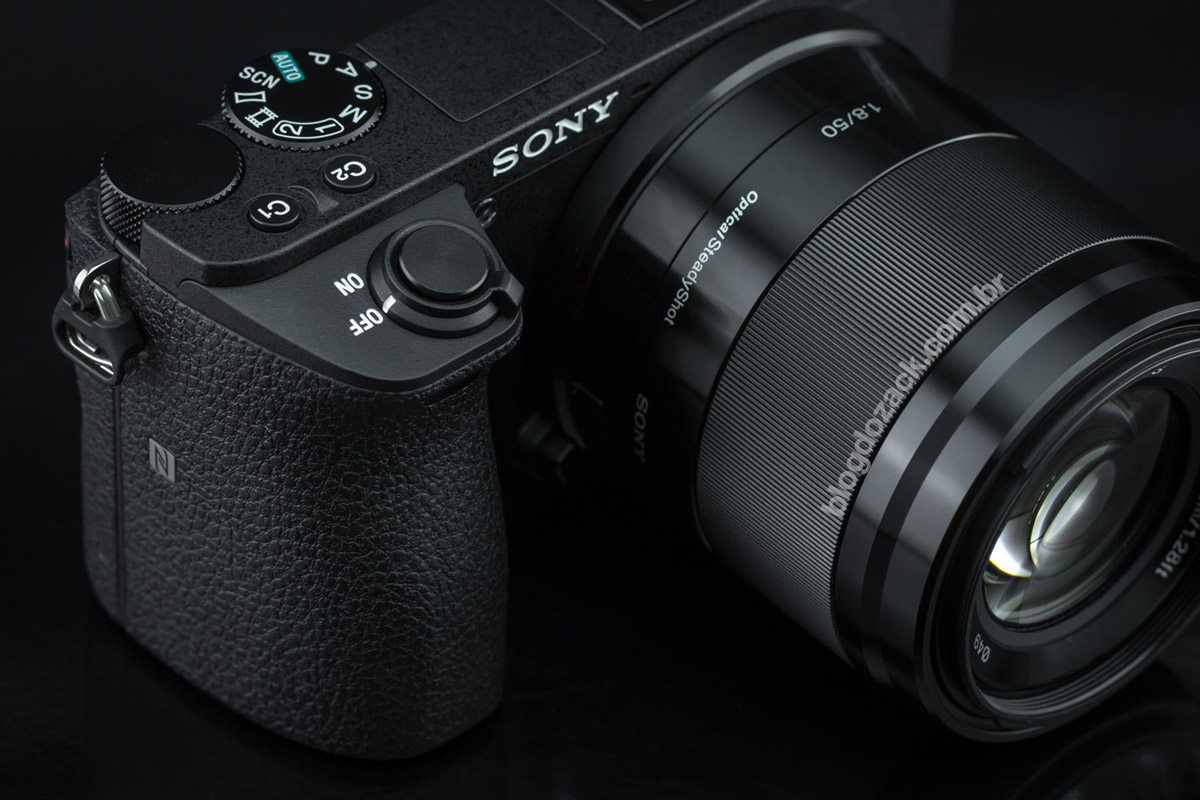
At the rear the A6500 is still dominated by a 16:9 3” LCD screen, a feature that flirts with the limits of our patience considering the camera’s price and generation. Together with a questionable resolution for 2017 (921K, far from a Retina display, and the same as the 2014 US$598 A6000), this panel is too small for the 3:2 pictures. So your captures look like passport photos to say the least, making it impossible to judge 1) focusing and sometimes 2) even the overall composition. It must be updated on a future A6#00, as we’ve seen Sony’s own Cybers-shot cameras (RX1R/II and RX100 Mark IV/V) all sporting a 3:2 screen with a built-in, collapsible EVF. As the RX100 uses a 1” sensor and the RX1R uses a full frame imager, it’s reasonable to imagine an APS-C A6#00 designed the same way; Sony is certainly charging us money for that, and it’s time for an update.
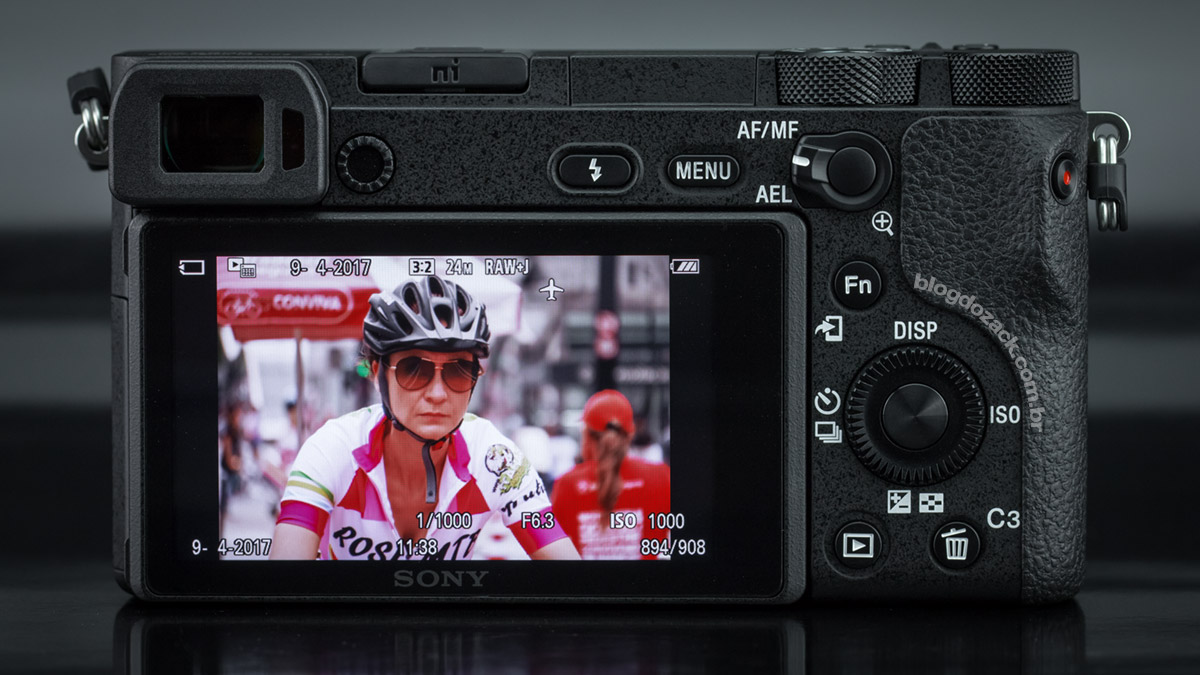
To the right screen side, Sony continues the exact button layout as the A6300, that itself got updated (over the A6000) with a AF/MF lever + AEL button, borrowed from the A7II. Four buttons sit inside a central rear dial, with up/down/left/right clicks next to a “Fn” button that activates an overlay menu; there’s self-explanatory playback and MENU buttons on the same side as well (take notes, X-Pro 2 and X-T2), together with a C3/trash and an off-axis, spring-loaded flash, that sits flushed to the top panel. There’s even a REC button molded on the rear thumb’s grip, still a mystery to why Sony thinks that’s a good place to position it. But they definitely built stronger buttons on the A6500, as they’re much more resistant to pressure and more pronounced in each place; this is no US$399 Cyber-shot and we can feel the high quality materials in our hands.
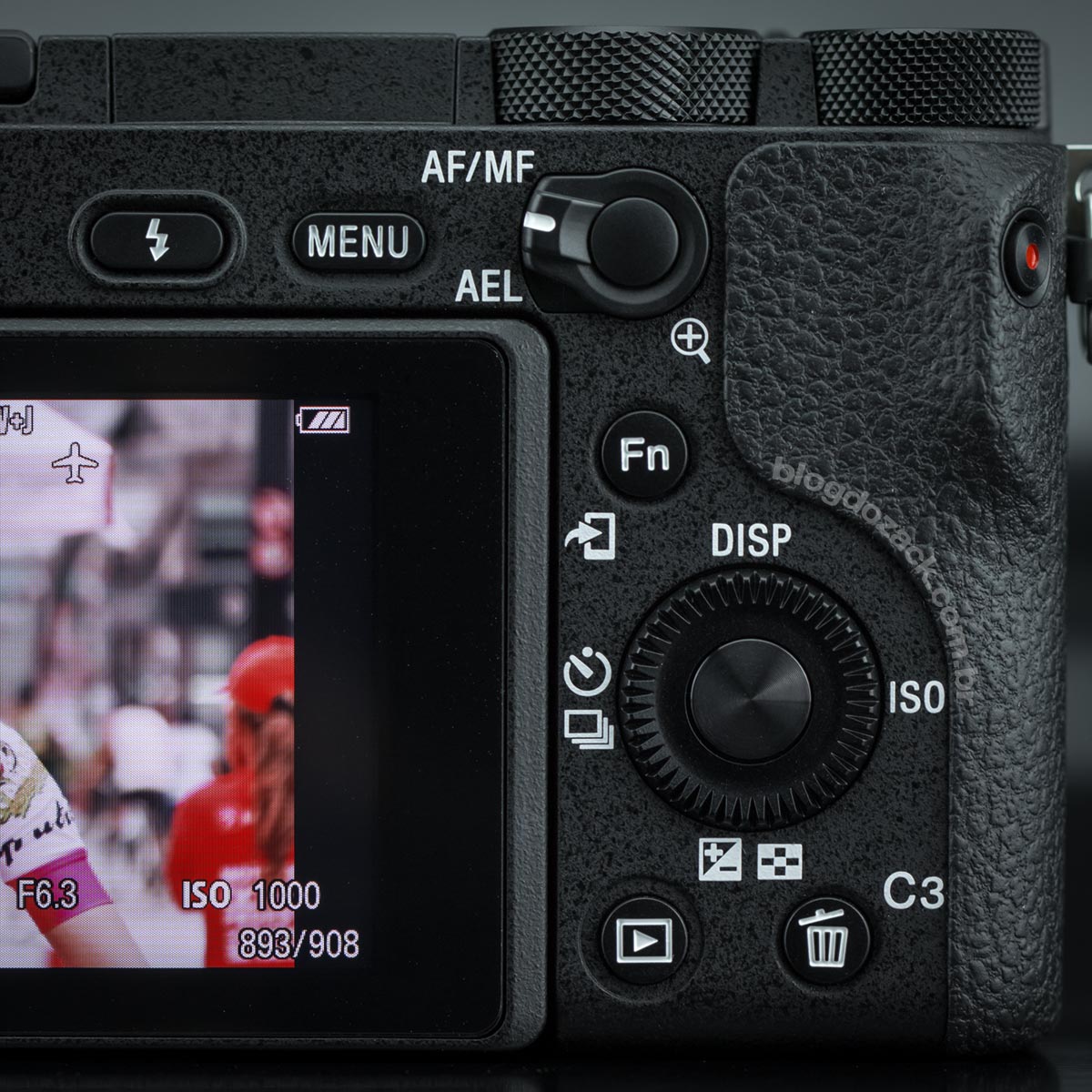
To the left, Sony hides under a reasonably fragile door the same connections as the A6300. There are HDMI, USB and microphone-IN ports, still with no headphones-OUT; unforgivable for a “hybrid” video/photo camera. While the HDMI offers an uncompressed 8-bit 4:2:2 feed (some Panasonics are already 10-bit), the USB allows for data and to charge the battery; a great time saver in times of USB ports virtually everywhere. Underneath the camera fits a NP-FW50 battery, that’s the same in every A6#00, good for about 400 pictures with the LCD screen (350 using the EVF), or 105 minutes of 4K video. It goes under the same cover as the single SD slot, supporting only the UHS-I protocol, that uses a redesigned door, more robust than the A6300 albeit still not sporting a rubber gasket sealing, like comparable DSLRs. Unfortunately we still don’t get the same twin-SD slots with USB3.0/UHS-II from Fuji’s X-T2, so I hope this is the last A6#00 series to come with such limitations.
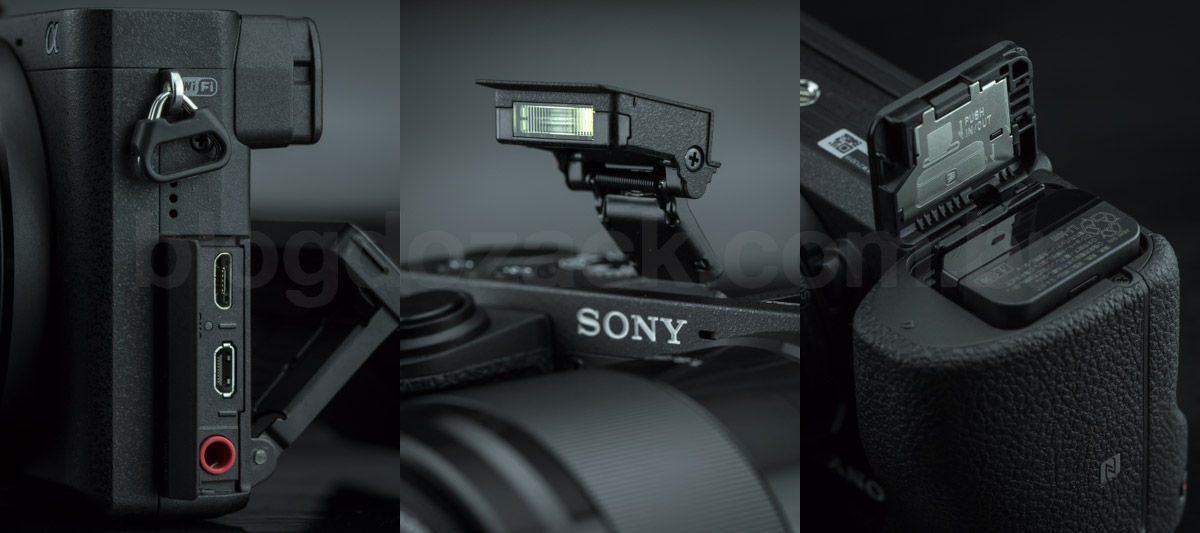
Overall the A6500 is a refinement over the A6300, that itself was a refinement over the A6000, all APS-C mirrorless camera made to shoot action; although Sony doesn’t make that clear with 1) the buttons layout, nor 2) the A6300 4K implementation (it became a hybrid for video as well). While both models are well built and ahead of the rest of the mirrorless market, Sony dares with quick updates on its cameras, delivering reasonably incomplete products; an issue we don’t get from other brands. And for that, the price point of each A6#00 must justify a very specific feature set, not only being “the greatest and latest”; they’re all already “late and great”. That’s where the purchasing decision comes from: to opt for the latest model, potentially being surpassed in a few months? Or to opt for the camera that suits the kind of photos you’re shooting? Maybe the A6500 justifies Sony’s quick updates, and maybe it’s the ultimate APS-C Alpha. Maybe.
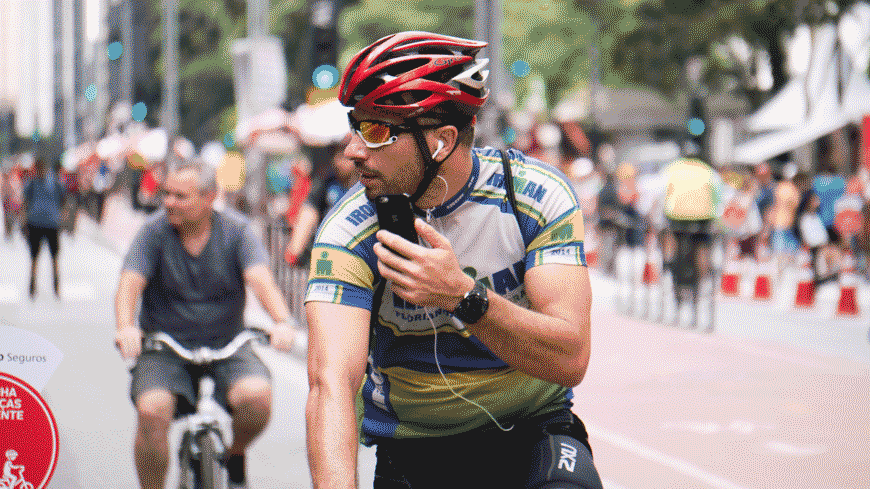
“Ironman” with the A6500 + E 55-210mm f/4.5-6.3 OSS at f/6.3 1/1000 ISO800 @ 210mm; 30 sequential raw files, less than half the camera’s NEW buffer.
While the A6300 was already a very fast camera, the A6500 builds up on that speed with a new front-end LSI (large scale integration). IT bridges the EXMOR image sensor to the BIONZ X processor, enhancing the processing speed and lowering the camera’s temperature, in order to withstand heavier jobs (longer continuous shooting, longer 4K captures); all without much changes to the overall camera design to dissipate the heat. In practice the experience is largely the same as the A6300, with a booting time of 2-3 seconds, surprising given the SteadyShot INSIDE (as it significantly delayed the A7II boot, compared to the classic A7), and faster menus and shutter release, that feels always ready for the next picture; as long as the camera finds focus (more about the AF performance in a bit). While the A6500 still doesn’t compare to a DSLR, that is “always ON” with a stand-by mode that barely uses battery, for a Sony camera the A6500 is fast enough.
After it’s ON, the A6#00 series headline has always been it’s continuous shooting speed. An experience once dedicated to higher-end DSLRs, that delivered 10 frames per second only on very expensive cameras, made for the professionals, now a fast shooting speed is standard in any mirrorless camera; taking the action photography to a larger group. While the continuous shooting rate is exactly the same as previous A6000/A6300, with both a 8 fps “Hi” mode that keeps the EVF/LCD preview and AF, and a 11fps “Hi+” mode that keeps the AF but only displays the last photo taken (that IMHO even enhances the idea of movement), it’s the much larger buffer that really sets the A6500 a part. It can buffer up to 107 raw files, over 4X the previous generation 22; comparable only to some Nikons (D5/D500) and not delivered by any Canon DSLR (not even the 1D-X Mark II). While some functions do gets “locked” while the buffer is writing to the card, questionable for a 2017 model, the fast “Fn” overlay menu still works, making some adjustments possible. The memory card BUS is still limited to the UHS-I 90MB/s protocol (some Fujis are already UHS-II, 312MB/s), but the A6500 is by far one of the fastest cameras on the market.

After it’s turned ON and as a mirrorless camera, the A6500 usability is genuinely electronic. Different from DSLRs that sports an optical viewfinder using mirrors and lenses, for an “organic”, fluid experience between you and your subject, the mirrorless lack of mirror (duh!) translates to a mandatory electronic feel; being operated by screens (except on some Leicas and the Fuji X-Pro). Although both styles overlap, and you can shoot through the viewfinder on a mirrorless camera, and you can activate an electronic Live View on most modern DSLRs, don’t let that fool you: both styles are essentially different, and a mirrorless camera will never be as fluid as a regular, mirrored camera. On the A6500 Sony repeats the same panels as the A6300, with a 2.36M dot OLED electronic viewfinder that covers 100% of the image, bright, sharp and colorful, with a refreshing rate of up to 120fps; a tiny rear LCD, with just 3” spread over the 16:9 ratio, with measly 921K dots that can be turned 90º or 45º down, for over-the-head or at-the-waist shooting. And it finally gets an addition ever so common in consumer electronics: the implementation of a touch sensitive screen.
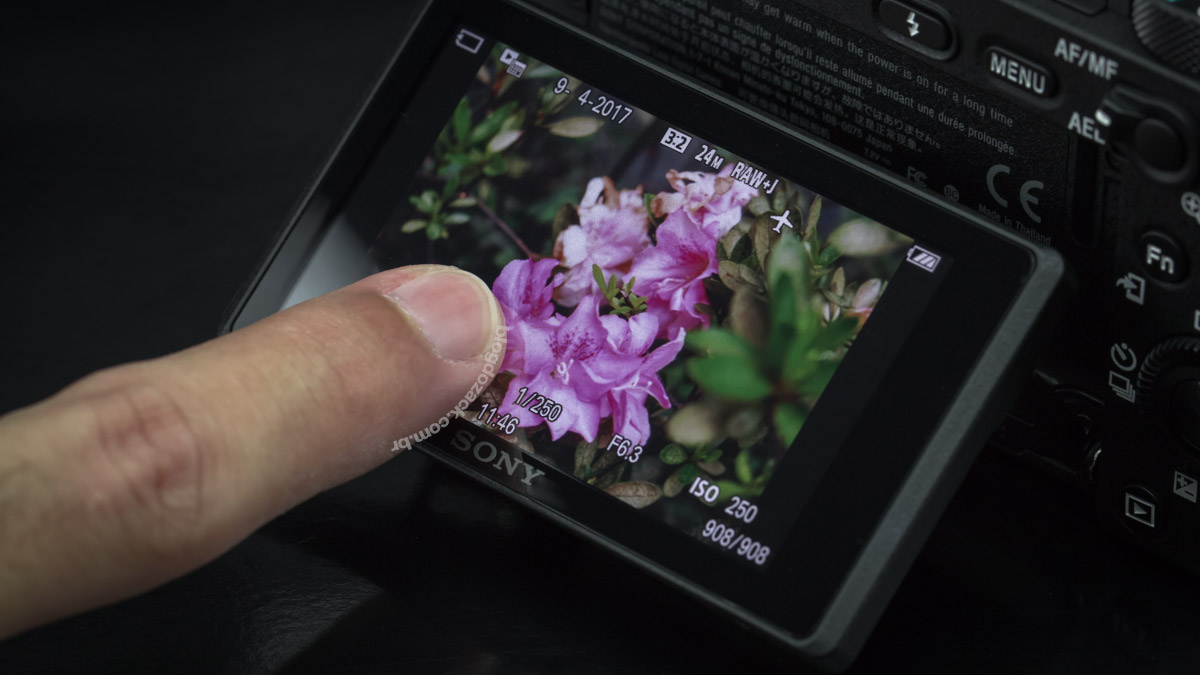
The experience with the A6500 electronic viewfinder (EVF) is the same as the A6300: sometimes good, sometimes bad. The good is Sony didn’t save in technology, using a very sharp 2.360.000 dots 0.39” OLED screen, that is extremely dense (imagine all those dots on a screen smaller than your thumb’s nail), with the standard OLED contrast (those used to Sansung’s Galaxy S# phones know how it feels), with super saturated colors ahead any LCD. Although the optical magnification is relatively small (1.07x equivalent to a DSLR’s 0.7x, about an entry level APS-C), far from Fujifilm’s immersive 0.77x X-T2, the Sony screen is very good. There’re overlay options to show simple informations like focusing points, camera angular orientation and alerts, or sophisticated displays of live histograms and manual focus peaking; or even automatic brightness or EVF/LCD auto switching (simply bring the camera to your eyes and it instantly turns on); and tone settings. On a daily basis, simply put, the EVF is one of the best parts of the A6500 user experience.
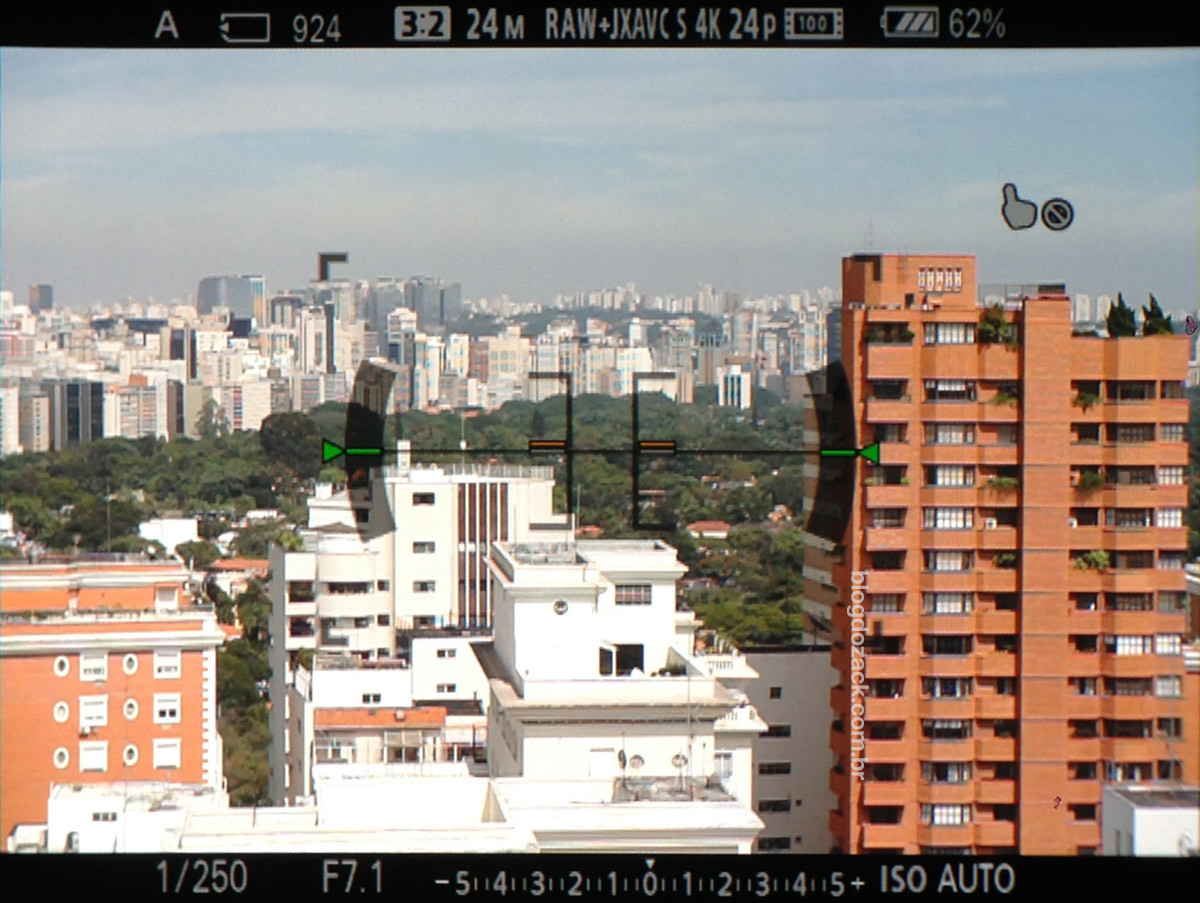
However the image rendering is still very electronic, far from a real optical viewfinder; and that’s still a problem. For example, Sony’s Live View engine either gives priority to the exposure setting (Live View Display: Setting Effect ON), getting too dark or too bright between photos (after all it won’t change the setting by itself); or it gives priority to the camera’s meter (Setting Effect OFF), randomly changing the exposure, often getting too dark whenever the camera detects something too bright. It’s obviously different from a typical optical viewfinder, that show reality as it is. Also the 120fps option cuts in half the preview resolution, that’s already not the best using the standard 60fps. It’s easy to see some aliasing (jittered lines) and moiré (random colors) in fine details, that become a distraction when we should be evaluating focus and composition. So while we get nice extra datas from an electronic EVF, the A6500 is still too electronic, just like last year’s A6300.
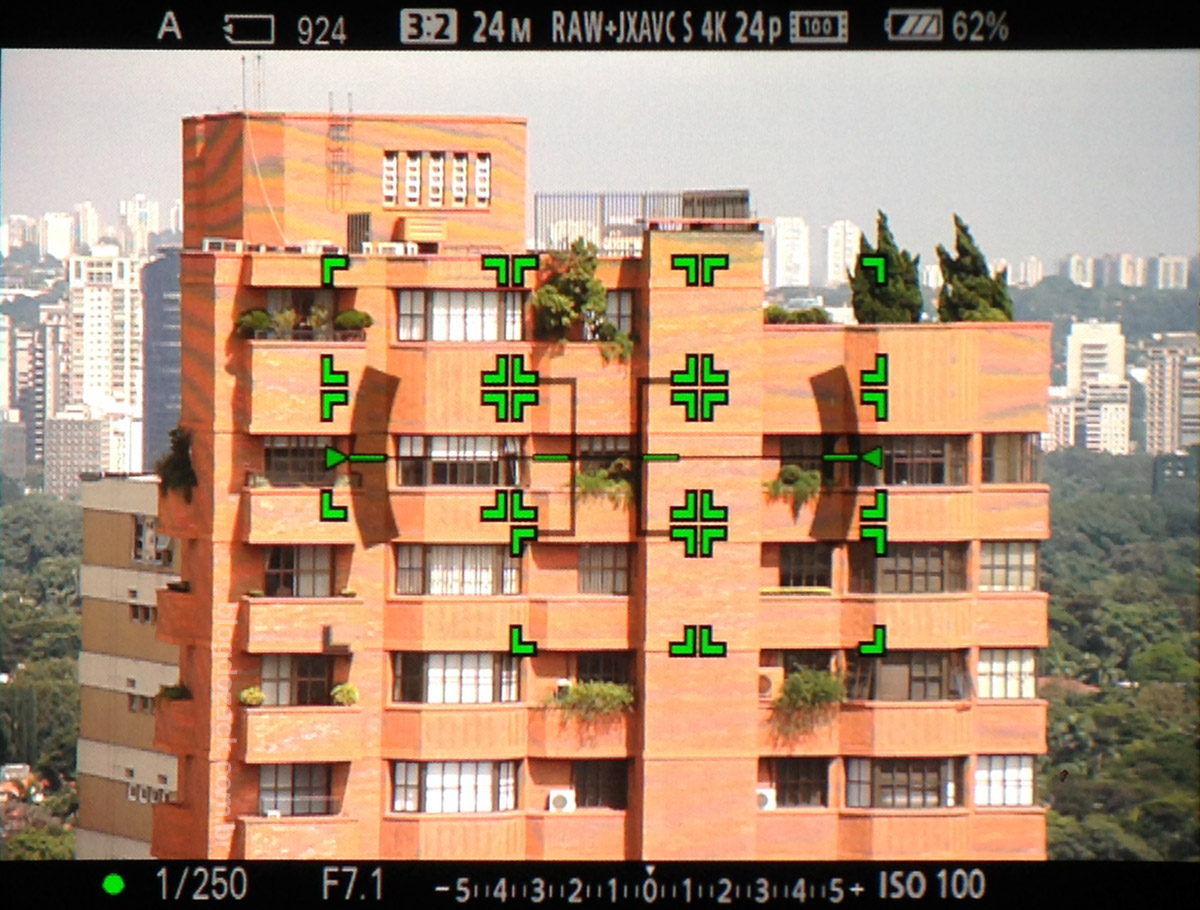
The rear LCD itself feels inoffensive, and brings an important update to the Alpha lineup: it’s finally touch-sensitive. But, again, just like the A6300, it reveals Sony’s greedy soul: the panel technology is outdated, with just 921K dots on a RGBW arrangement (red, green, blue, white, that Sony calls White Magic, brighter than normal), with poor, washed out colors that lack contrast, on a too-long panel with poor resolution, making it impossible to check for focus before (and even after) the capture; it’s simply awful for 2017! But the worse part is the 16:9 ratio on the measly 3” size, making your photos seem like passport photos at best; not comparable to the rest of the market (Fuji and Canon are all 3:2”); nor compatible with the US$1398 price tag. Considering this is the third A6#00 generation, the A6500 LCD screen in unacceptable from Sony, that should be an expert in producing screens. Any Canon Rebel from 2010 gets a better panel than every single A6#00; what a shame!
![]()
However nothing surpasses the level of awfulness Sony managed to achieve with its touch-sensitivity implementation. Yes, there’s no better word: awfulness! It’s been a while since I used such bad touch-screen implementation (not it a cell phone, not on an ATM, a ticket machine…), and it’s shameful from Sony to use it in 2017. First, the only touch capability of the screen is to operate the auto focus. There’s no touch interface for the menus (the Nikon D500 is also to blame), there’re no playback gestures, no keyboard, rubber-banding… NOTHING! What we’re used to on smartphones for the past ten years, Sony completely ignored on the A6500. Second, even during the AF operation the touch controls are laggy. When there’s no lag, there’s imprecision, as a matter of a fact impressive for 2017: how did they managed to screw such a simple feature? O_o
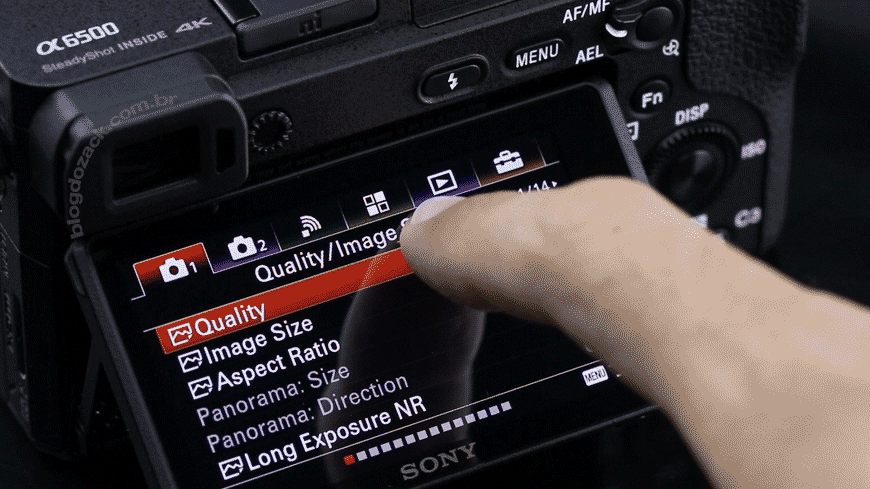
Last but not least, the touch sensitive AF implementation is very complicated. For instance, the A6500 doesn’t come factory set to a “touch-to-focus” setup; that’s only possible using the “Lock-On” mode, that is locked to the center point and dependent on a button. Yes, there’s no “point-to-select-and-follow your subject” mode, like any smartphone from the last decade. Another issue stands to the novelty “touch pad” focus implementation: with the camera at eye-level and the LCD screen turned OFF, it’s possible to simply slide your finger on the LCD itself, moving the focusing point from side to side; copying what Olympus, Panasonic and Canon (M5) did with their mirrorless cameras. But the panel takes a looong time to detect your fingers input, with a noticeable lag that makes it impossible to quickly select the right focusing area. Unfortunately I found it best to turn the touch-AF OFF, going against one of the A6500 main highlights; it’s simply unusable!

Once chosen how you want to use the A6500 (via the LCD monitor or the eye-level EVF), when it’s time to focus the picture, other limitations might happen. While on the A6300 review I had a reasonably positive experience with the E 16-50mm f/3.5-5.6 PZ OSS, practically instantaneous to focus static landscapes, or with the E 55-210mm f/4.5-6.3 OSS used strictly to follow and focus a single moving target coming straight into the camera’s direction, when pushing the limits of 1) shooting short depth of field images or 2) low contrast scenes, or even 3) various moving targets on the same frame, the A6500 revealed how mirrorless cameras still lack the trustworthy operation of any DSLR; reminding me of the times I owned a Cyber-shot F717, back in 2004.
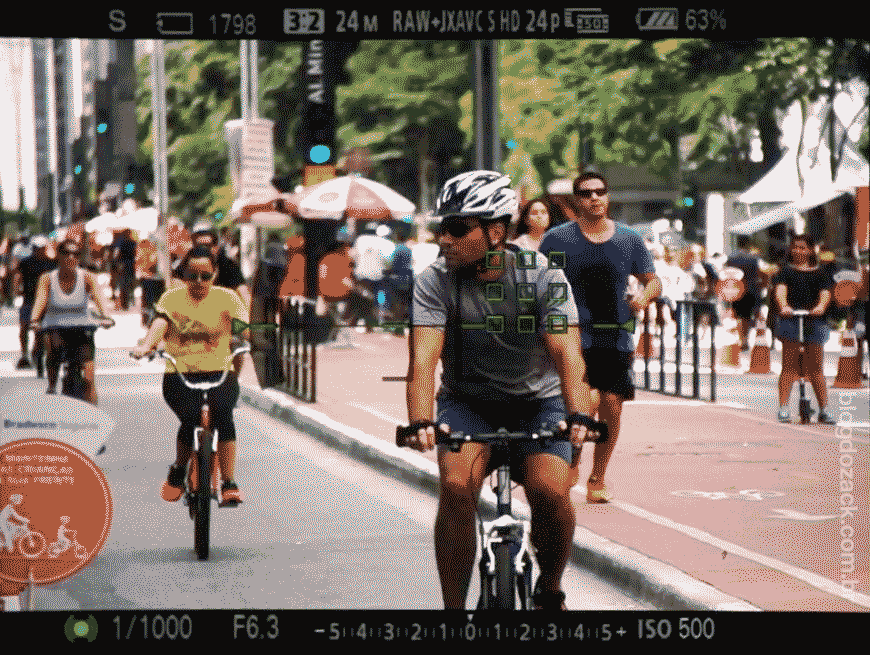
The A6500 focusing system is exactly the same as the A6300: 425 phase-detection points built-in the image sensor, instantly sensitive to distance; and 169 contrast-detection zones, made for precision; that combined gives these two cameras the title of “most focusing points” on the market – even top-of-the-line DSLRs stopped at the 61 (selectable) points. But the problem is that Sony doesn’t use any truly “high-end” focusing point, like cross-type, high-precision or low-light sensitive (less than 0EV); also without any configurations on the predictive algorithm (like Canon/Nikon does with its Locked-On or Responsive settings). But there are five main AF modes: single, in which the camera finds focus and locks just once; continuous, that searches for focus whenever the button is pressed, made for moving subjects; auto, that switches between the two automatically; dynamic, combining the AF with a manual mode; and manual, self-explanatory.
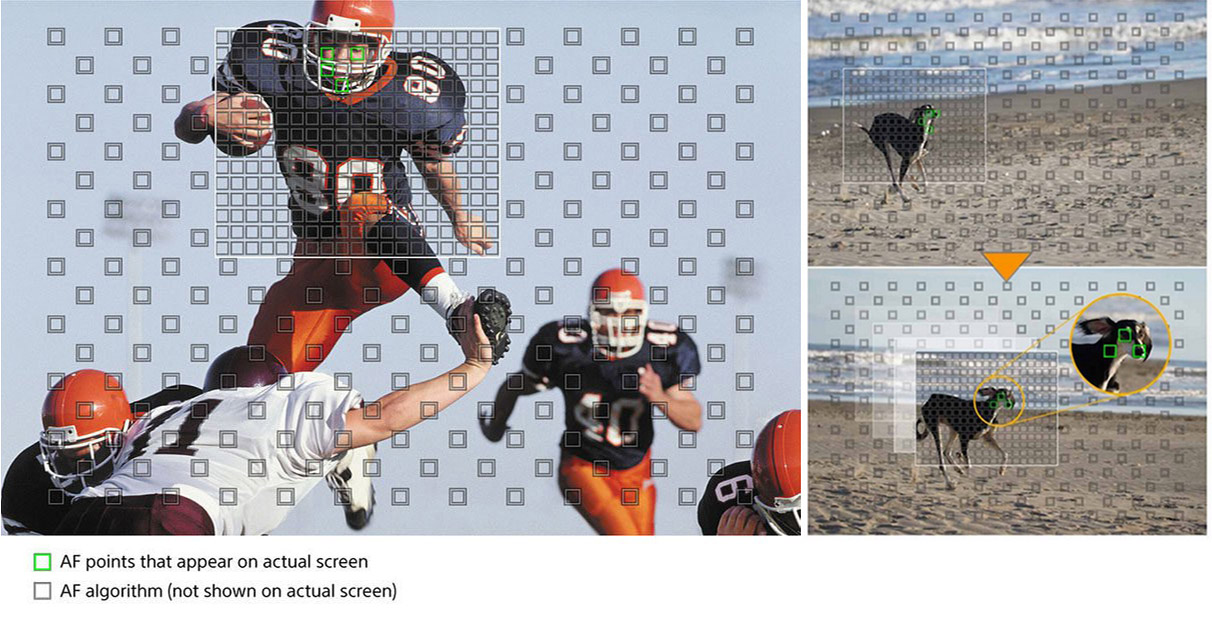
Credits: Sony UK.
Instead of points, we must select areas in which the camera will look for focus: wide, that automatically searches the whole frame for contrast, with options to give faces or eyes priority; zone, that limits the area to about 60% of frame, useful to isolate a person in a group, like when shooting sports; center, self-explanatory; Flexible Spot, with different sizes (small and medium) for an smaller area in the frame; Expand Flexible Spot, that also searches the area surrounding the spot, enhancing the chances of focusing; and Lock-on AF: Expand Flexible Spot, that we select the first focusing point and let the camera follow that area around the frame. And it’s when we start mixing the two, focusing method and point selection area, the A6500 starts to show its limitations.

Let’s start with a very basic scenario, single + wide, when the camera behaves like any smartphone automatically seeking focus and subject, just once. When shooting a single flower in front of a bush, the A6500 almost always gave the background bush, already sharp in focus, the focusing priority; never attempting to change the focusing position to the foremost point, that was the flower. As the A6500 doesn’t gives priority to what’s closer to the camera, it’s nearly impossible to predict where the camera will actually focus: what’s closer to the lens or what’s already in sharp contrast? Another issued happened with a much simpler situation: a past-sunset landscape with a telephoto lens. As the mountain layers get smooth and low contrast, it was nearly impossible for the A6500 to autofocus 1) using a smaller area, focusing on the farthermost mountain, or 2) using the wide area mode, because it would consistently leave the horizon out of focus. The camera refused to focus even under simple situations, hunting for contrast and never releasing the shutter; ridiculous!
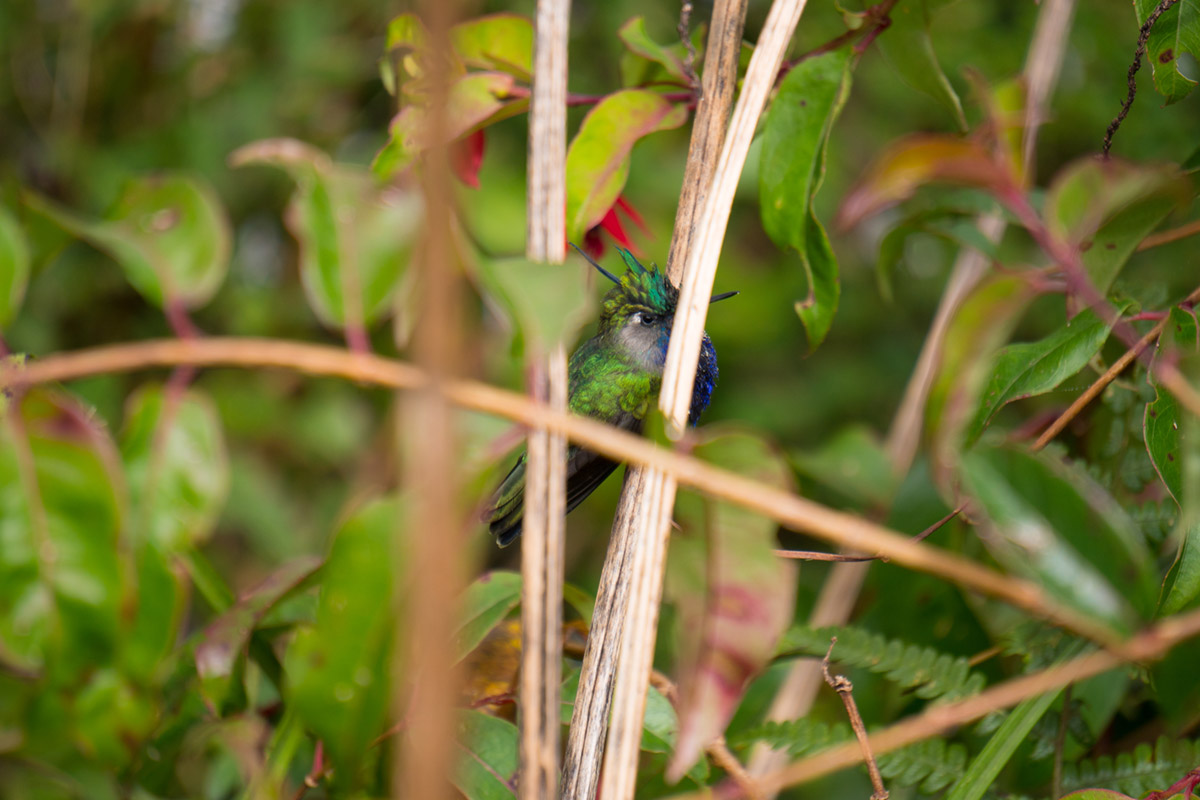
“Birds” with the A6500 + E 55-210mm f/4.5-6.3 OSS at f/6.3 1/400 ISO250 @ 210mm; small birds are a challenge for the A6500 large focusing areas.
Under more sophisticated settings, the AF gets worse. For example to follow subjects around the frame, using any of the automatic area modes (wide, zone etc), while the A6500 easily finds people faces and tracks them, it easily looses them as well. As there’s no intelligent (IR sensitive) metering assisting the 4D-Focus system, idea used on virtually every Canon/Nikon DSLR, the Sony A6500 can’t distinguish between a human face and a volley ball; made worse by the inability to select any locked-on/responsive setting. Also, when using the advanced tracking modes (Lock-On and Eye Focus), you must program them to a button; it’s not “always-on” like even the most entry-level Fujifilm (like the X-A2). You can’t just press a button and expect things to happen; you must always customize and press the right button to get an specific focusing mode. So while I applaud Sony for pushing the 4D-Focus to all of its mirrorless cameras, bringing a vectorial subject prediction focus to a larger group of users, they’re not yet delivering a trustworthy hardware for professionals, that still must rely on the very expensive – albeit much more elegant – DSLR user experience.

Notice how the autofocus system loses the subject and changes the focusing point to the bicycle’s mirror.
When all the planets align and you’re sure of the subject’s movement, then the A6500 (as well as the A6300) delivers impressive results for a continuous auto-focus mirrorless. With native E-mount lenses, under loads of light and contrast, this camera can lock focus almost instantly at the press of a button, vastly superior to most smartphones; giving a distinct experience to everyday snapshots. With clear faces (no glasses, helmets, etc), and not being obstructed by other subjects in movement, the 4D-Focus (axis X, Y and Z measured over time) can compete with top-of-the-line cameras, like Canon’s AF SERVO and Nikon’s AF-C/3D Tracking. The A6500 can easily track and follow people moving around the streets in real-time, for complete sequences in focus, all in raw format thanks to the immense buffer; as long as they’re clear and nobody passes in front on them. So although it’s still flawed, the 4D-Focus system is a step in the right direction; with a promising future.
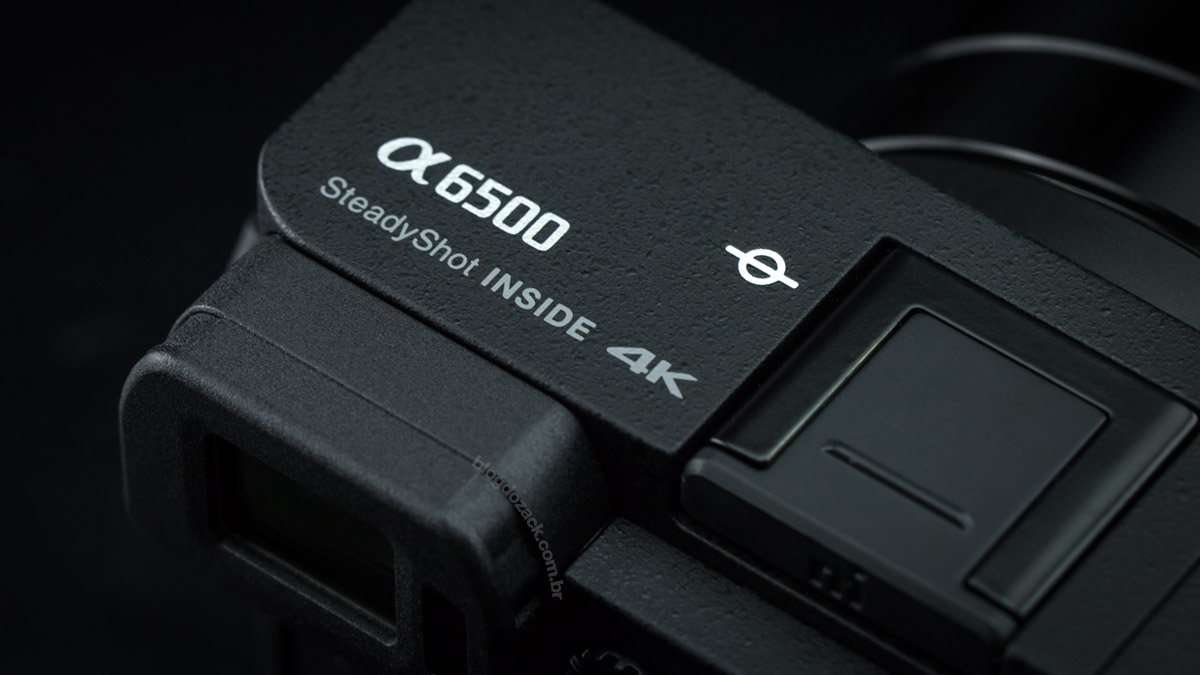
Another interesting addition to the A6500 is the SteadyShot INSIDE. The idea is to built the image sensor inside a stabilizer module, controlled by gyroscopes and motors capable of compensating for the hand’s movements; guaranteeing sharp captures under low light, or during tripod-less video recordings. There’re 5-axis of measurement, two bidimensional (left/right, up/down) and three roto-angular tridimensional (X, Z and Y axis); although the compensation itself is only bidimensional (there’s no roll or pitch, just yaw). The module can be used with any lens, be it native E-mount or adapted, with focal length adjustments, great to put those old, large aperture primes back into use. And with Sony’s own OSS (Optical SteadyShot) lenses, the compensation can be made at up to 5-stops, with camera and lens working together. In practice it all works, but with typical Sony’s fashion: no guarantees it will actually work, with picture-perfect results.
While during photo captures the stabilizer can make a good job in compensating for up to 5-stops with OSS lenses (here tested with the E 55-210 f/4.5-6.3 OSS), during video captures the results are not the best; potentially affecting the users that could benefit from the stabilizer the most. Yes, you know what I’ll complain about: Sony’s SteadyShot INSIDE suffers from radon jitters during panning movements and during focusing transitions, never looking smooth like a simple Handycam or a professional grade steadycam. The video market is still experimenting with hybrid photo + video equipments, thanks to Canon’s EOS 5D Mark II from 2008, and not every lens can deliver the hardware for both types of capture, that are indeed very different to focus, stabilize and zoom. So don’t expect the A6500 to substitute your tripod, and take the SteadyShot INSIDE it as a secondary purchasing decision on this model; it’s too questionable for video capture.

For those interested in video, the A6500 keeps Sony’s aggressive hybrid strategy, technically delivering the most advanced cameras at this price point; ever! The resolution goes up to 2160P (3840×2160) in S35mm 24fps mode, with a full 6K sensor readout, pixel binned to 4K (amazing); or 2160P30 with a sensor crop (1.23x), faster in capture but smaller in area. In 1080P resolution it goes up to 60fps in S35mm mode, but crops at 1.14x in 120fps; with a variable speed of 2, 4, 8, 15, 30, 60 and 120fps; all captured at 100mbps (12.5MB/s) in a X-AVC S, packed into a .MP4 with Linear-PCM audio. The BIONZ X processor even offers log curves for gamma and gammut (color), identical to Sony’s top of the line CineAlta cameras (costing US$35.000), with S-log3 and S-gammut 2 that preserves up to 14 stops of dynamic range; albeit questionable with the 8-bit codec. Not only that, the camera can capture simultaneous 4K and 1080P files, either to easily share the 1080P Wi-Fi or for daily proxies during post-processing. It’s all captured to the internal SD card, together with a live, uncompressed 8-bit 4:2:2 HDMI feed, so there’s little to complain about the A6500 video capture. There are just some, let’s say, “physical” limitations, that we must talk about.
The good part: the A6500 4K resolution is awesome for the price and equipment size. Here tested with the E 50mm f/1.8 OSS, a large aperture prime that was used with two, three stops closed, at its peak resolution, the A6500 video fies are the most detailed ever tested on vlog do zack. Yes, it’s more detailed than the 5D Mark IV, the Nikon D500 and the Fujifilm X-T2; all more expensive than the A6500 (and don’t forget the A6300). Even with the standard image profiles turned OFF, as they’re overly aggressive in sharpening the details, this tiny little camera is capable of rendering spectacular footage of landscapes, rock textures, the skin texture; incredible when played back on compatible UHD screens. If you’re in need of resolution today, be it for a client’s request or for future-proofing your work, don’t think twice: these two Sony cameras (A6300 and A6500) are the best for 4K video resolution at this price-point today; by a good margin.

“Monument Valley” with the A6500 + E 50mm f/1.8 OSS at 2160P24 S35mm, Creative Style “Standard” and Picture Profile “Off”; click for larger.

“Bryce Point” with the A6500 + E 50mm f/1.8 OSS at 2160P24 S35mm, Creative Style “Standard” and Picture Profile “Off”; click for larger.

“Casca” with the A6500 + E 50mm f/1.8 OSS at 2160P24 S35mm, Creative Style “Standard” and Picture Profile “Off”; click for larger.
The bad is the A6500 can’t bend the laws of physics, and we get the same overheating and rolling shutter issues from the A6300. The high temperature is expected under longer captures: Sony recommends only 20 minute sessions on the instructions manual, despite the camera’s recording limit of up to 29:59. A new menu option allows fot the camera to stay ON even under high temperatures, with a new Auto Pwr OFF Temp. “High” setting, but frankly you should strongly consider a proper videocamera (and not a hybrid mirrorless) if you’re serious about video; the camera gets hot and might shut itself OFF after longer 4K captures. Also the rolling shutter is expected from the hybrid image sensor, and happens under too much action. It’s slightly reduced in 4K30P, when we’re using a cropped sensor readout, but is still visible on cars passing by, helicopter trusters, euphoric panning movements… The SteadyShot INSIDE can reduce some of the jello effect from handheld footage, but it obviously can’t compensate for what’s moving in front of the camera. So for shooting action, you’re all better served by a different camera.

Another questionable feature is the biggest headliner of the A6500: the SteadyShot INSIDE implementation. While the stabilization module indeed feels like it’s working, compensating for stronger hand movements, the motor frequency doesn’t really match finer shakes; doesn’t match the shutter speed; nor the 4K resolution. What we get is a lot of jitter on static scenes watched on high resolution displays, even with OSS lenses that should offer up to 5-stops of compensation. It’s much different from Canon’s IS (image stabilizer) lenses, that are absolutely stable on point, and hard to recommend the A6500 as superior to the A6300. Also during panning movements the stabilizer randomly changes direction or the overall velocity when reaching the compensation limits, again, much different than what we get from a good steadycam or dolly. So this SteadyShot INSIDE implementation feels incomplete compared to the rest of market, and Sony must fix it.
The video function set is largely the same as the photo capture. The exposure can be either fully automated or fully manual, or partial (you can set the shutter speed or the lens aperture), and the settings are easy: just press REC at any moment to start the capture. The continuous autofocus is the only setting offered for the autofocus (there’s no “single AF”), and offers transition speed (slow, normal and fast) and sensibility (Standard or Responsive) options, together with touch-screen controls to easily select the focusing point (with a Lock-on option); or you can leave the camera to automatically track faces (for example to record a video log). The phase-detection points are all active during video recordings, so the A6500 rarely hunts for focus, at least under loads of light and contrast; although it can’t really decide what person to follow on a group (often missing focus even on the closest subject). Still, the LCD brightness is reduced during 4K capture in order to reduce heat, making it impossible to shoot on sunny days; you’re stuck to the EVF.
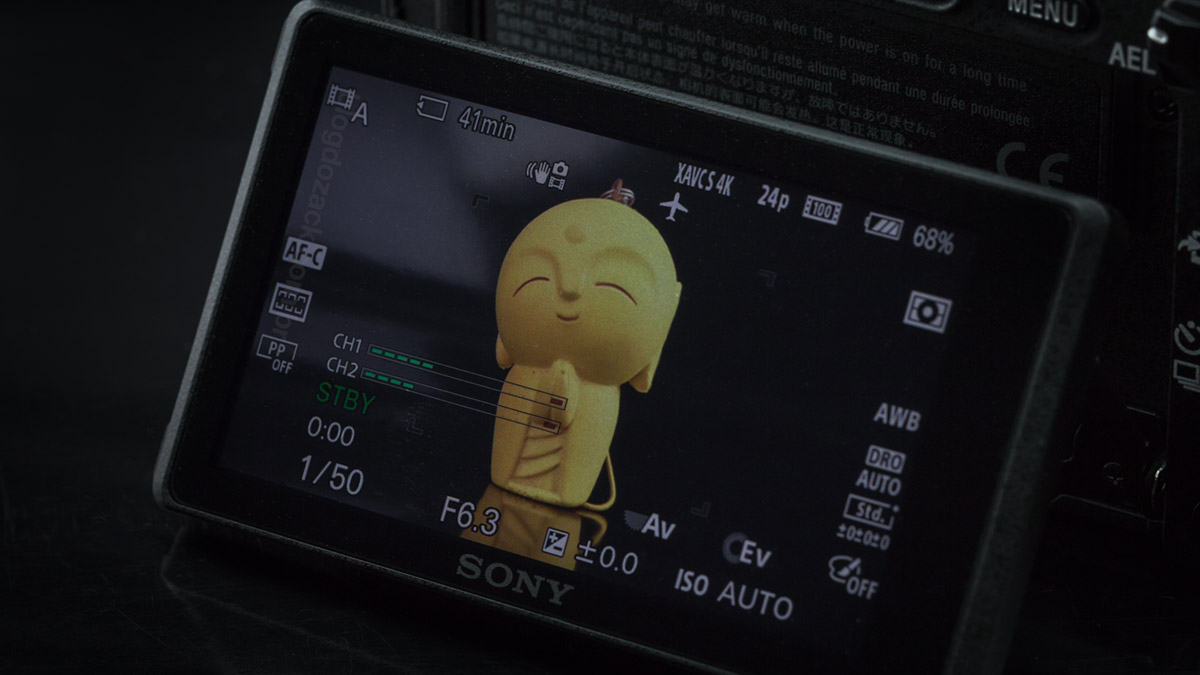
(IMHO) – That brings us to the question: can you get the job done with the A6500? Probably, as long as you know what you’re doing. The overheating issue is almost comical, especially coming from the internet: those used to work with professional cinema cameras know how it works (leave an ARRI or RED Cinema under the sun to see if works), and protecting the equipment from overheating is a must. These are large sensors paired to powerful processors, running in tight enclosures being self-powered by its own batteries… It’s going to get hot! What matters is the file’s quality, and the A6500 delivers; despite the so-so SteadyShot INSIDE performance. The A6500 is very interesting for 1) those learning cinematography or 2) work on a budget but in need of 4K today. Canon won’t bring the 4K capture to it’s entry-level DSLRs anytime soon, and other 4K mirrorless cameras are way more expensive. So the A6300/A6500 are the best options for those needing the resolution right now, and I can recommend it if you know what you’re doing.

“Beija-flor” with the E 55-210mm f/4.5-6.3 OSS at f/6.3 1/400 ISO2000 @ 210mm; all photos with the A6500; raw files available at Patreon.
Recycling the same 24MP CMOS EXMOR sensor from the A6300, the A6500 offers virtually the same image quality. This chip, which was updated from the A6000 despite the same pixel count, uses an unconventional copper-wirring, thinner than standard, to enhance the light sensitive area and the readout speed; although not comparable to the back-side illuminated (BSI) sensor from the A7RII. For those shooting raw the perfomance is the same, that itself used to lead the market back when the A6300 was launched in 2016; before the (superior) D500 came into market. Although both cameras can’t compared in resolution (24MP vs 20MP), low-pass filter (absent on the D500) and price (US$1996 for the Nikon), the Sony sensor is still very good to render details; it’s very good dynamic range for difficult exposures; and its colors and noise profile when used with high ISOs; a much better performance than Canon which uses Dual Pixel image sensors. The new front-end LSI also promises better processing for the JPEG workflow, although the BIONZ X aggressive noise reduction damages details and textures. Overall we get an APS-C camera with the same performance of a full frame sensor, if we just consider the performance from a few years ago.

“Branch” with the E 50mm f/1.8 OSS at f/1.8 1/2500 ISO100; shallow depth of field from a large aperture prime, even on the smaller APS-C format.
Under low ISOs, the A6500 sensor is incredible to generate finely detailed files with plenty of dynamic range. The 6000×4000 files are fun to explore on computer screens, as 100% pixel peepings reveals new words of details invisible to the naked eye; here tested with the extremely sharp E 50mm f/1.8 OSS. Although much of the pixels are thrown away on web outputs (Facebook, Instagram), it’s interesting to see how far we came in image quality for the price. It’s also with these low ISOs (up to 400) that the A6500 keeps the best dynamic range, with preserved shadows and highlights for minimal loss in quality even after heavy manipulations. Processed using Adobe’s Camera Raw, it’s possible to play with single shot HDRs, compensating for 100% shadows and blacks that reveals completely new exposures around darker zones. While some noise is added and the colors fail to represent reality, it’s a good flexibility to work with the A6500.

100% crop, incredible resolution from a 24MP sensor, paired to a high performance prime.

100% crop, fine details allow for large, high quality prints.

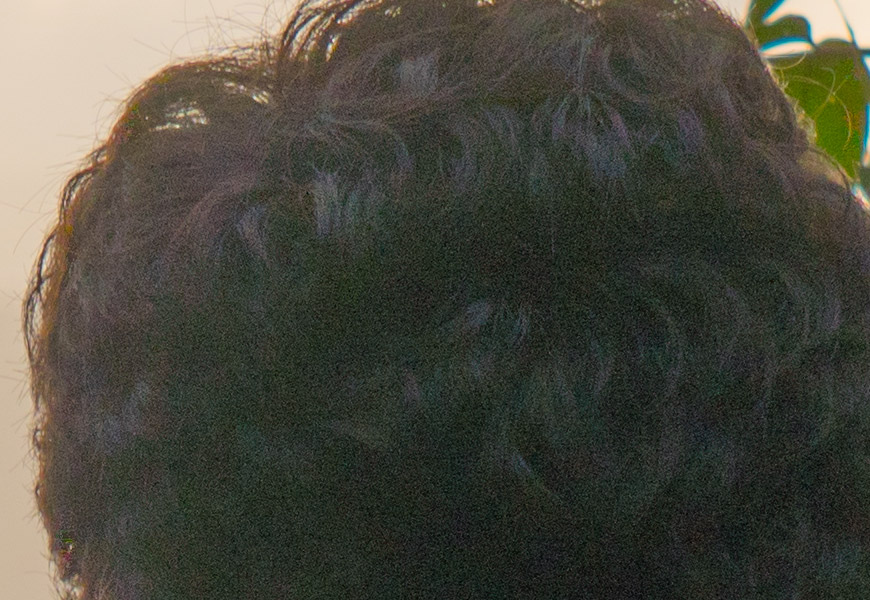
100% crop, but under extreme setting, the noise profile show loads of color blocks; albeit being a good performance for an APS-C.
Raising the ISO past 800 reveal the sensor’s noise profile, as organic as film, pretty in prints. It’s visible mostly on shadowy areas, more visible if recovered in post; but never really destroying an image. If it’s reduced for web output, it will be hardly seen. ISO2000 and over flirts with color loss and fine details, despite keeping a faithful reproduction of the scene, still publishable. And ISO3200 and over is the limit of what’s acceptable for brute image quality: the shadows get a thick noise profile, and the colors get washed-out, begging for heavy post processing. Although no capture is truly unpublishable up to ISO12.800, when the shadows get magenta, these values are honestly over the top; in over a month of randomly testing the A6500, no photo required more than an ISO3200, actually used on a very boring capture. For interesting exposures, with good light techniques and the correct lens for the job, the A6500 works well under low light.
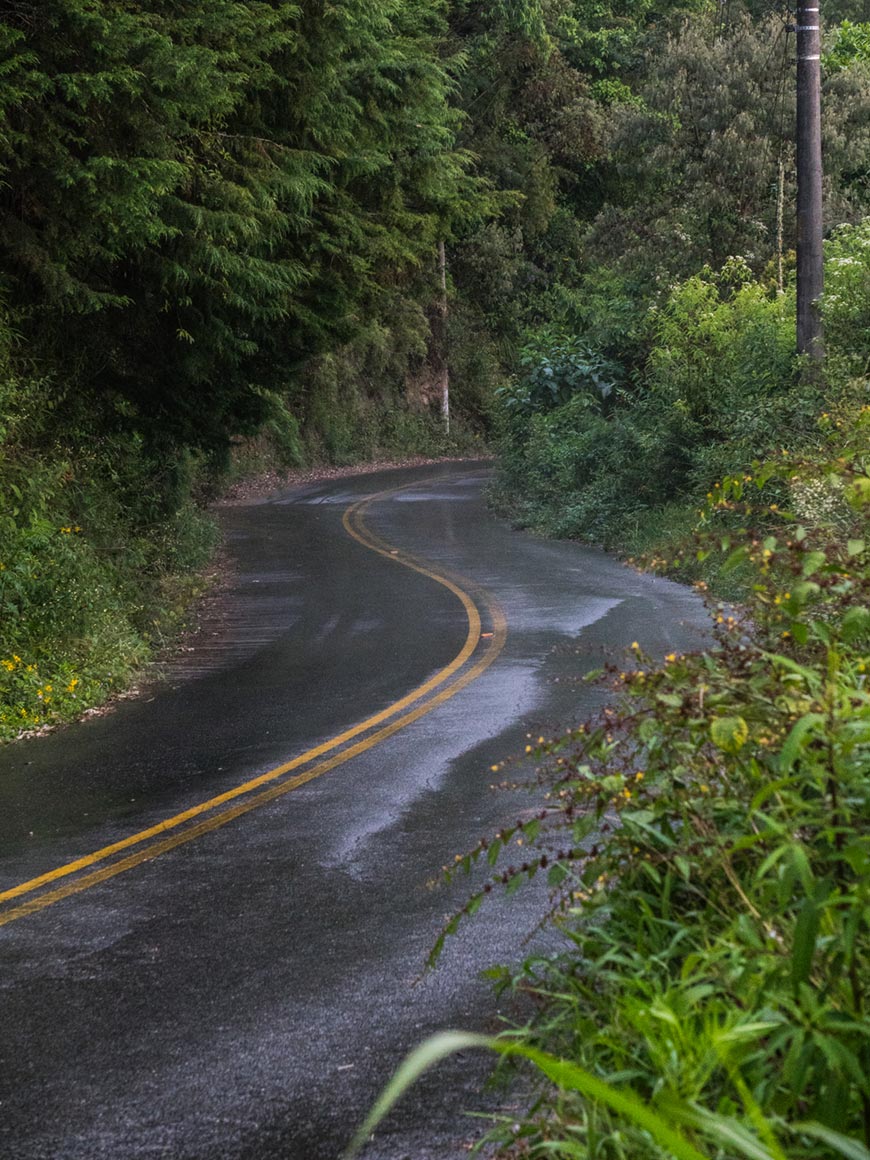
“S” with the E 55-210mm f/4.5-6.3 OSS at f/8 1/100 ISO3200 @ 55mm.
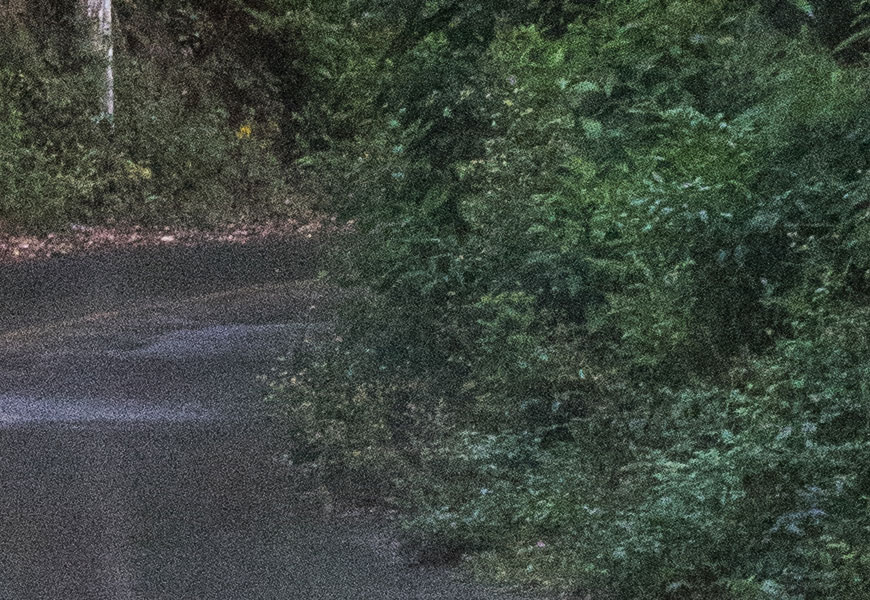
100% crop, high ISOs show a lot of noise, with significant loss in details albeit the reasonable colors.

100% crop, ISO800 almost doesn’t show any signal noise on shadows or highlight zones, with good color saturation.

100% crop, high ISOs can be used under plenty of light, to keep the shutter speed very fast in order to capture action.
Sony’s color profile that are always questionable: is it possible to live with it or it just can’t compete with Canon’s and Nikon’s (that itself I find to be poor)? It’s a matter of taste. For landscapes, the Sony works with intense greens for leafs and trees, that feel saturated under the bright sun light. Blue tones vary from scene to scene, from a crystal-clear water blue to a deep blue indigo, when in reality they were much more muted. The yellows are hardly seen before heavy post processing, thus impacting portrait photography (Canon is the clear winner with an orange-ish/yellow-pink). So it’s a matter of taste: for me, every Sony color feels electronic, pushed to neon tones and video hues, lacking an overall “photo-feeling” we get from Canon’s warm reds and Fuji’s deep purples. It’s hard to evaluate such a personal subject, but for me the Sony colors are far from reality.
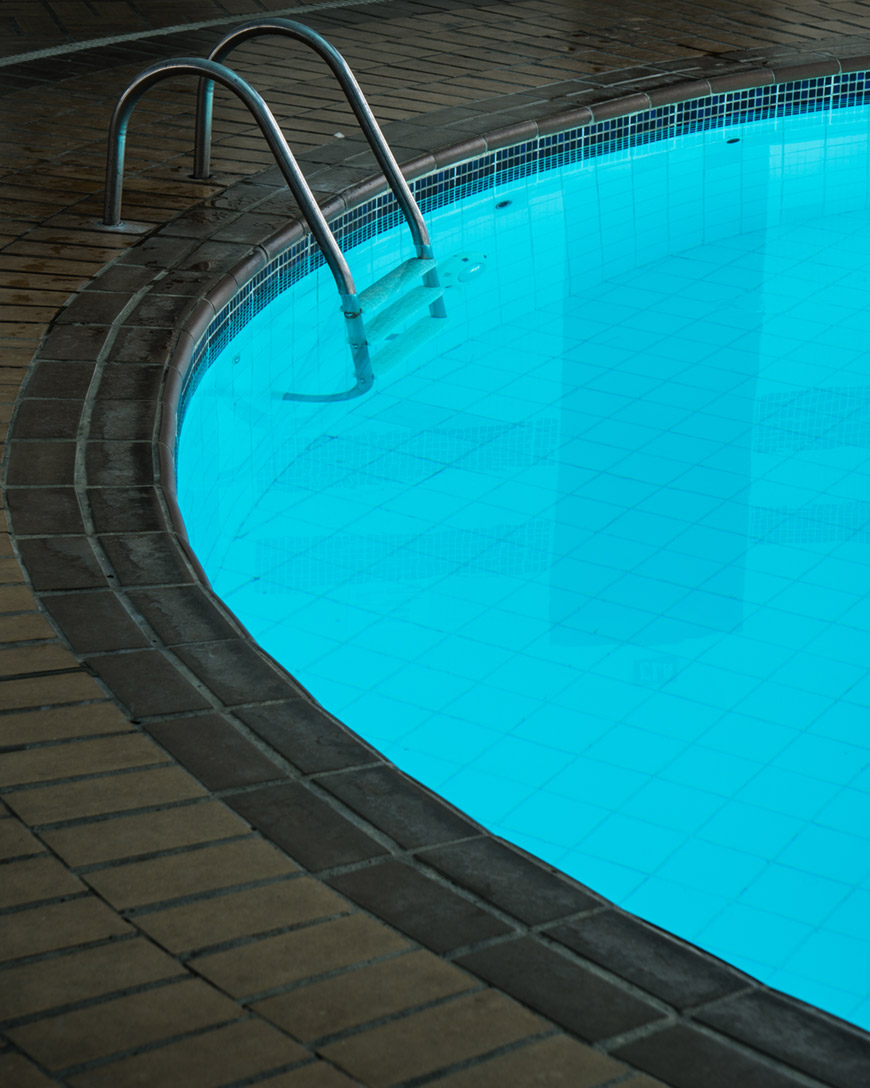
“Pool” with the E 55-210mm f/4.5-6.3 OSS at f/7.1 1/100 ISO100 @ 55mm; neon blues from Sony’s EXMOR.
The BIONZ X processor ir responsible for the A6500’s JPEGs and 4K videos, with various color profiles for photos (Creative Style) and videos (Picture Profile). And with the new front-end LSI, Sony promises better image processing given the more robust data pipeline. The factory set “Standard” is smart in giving ultra-sharp files at every ISO value, almost like a low-pass-less camera; that’s not the case with the A6500. The photos get “highlighted” details between shadows and well lit areas, similar to a “Sharpening: 50” on Adobe’s software; that’s very high. There are options for in-camera lights and shadows optimizations (DRO, dynamic range optimizer), that helps with complicated exposures, especially when backlit. But it’s with Sony’s aggressive noise handling that the raw file mode make itself useful, as it helps keeping the details under high ISOs. Sony insists to profile the noise based on the chroma signal, impacting on the pixel gamma; thus erasing the details. So it’s a good idea to keep the noise reduction profile OFF at all times, although it still erases some of the details, even applied to raw captures; a mystery to why Sony process the files this way, an issue known as “the star eater” (when used for astrophotography).
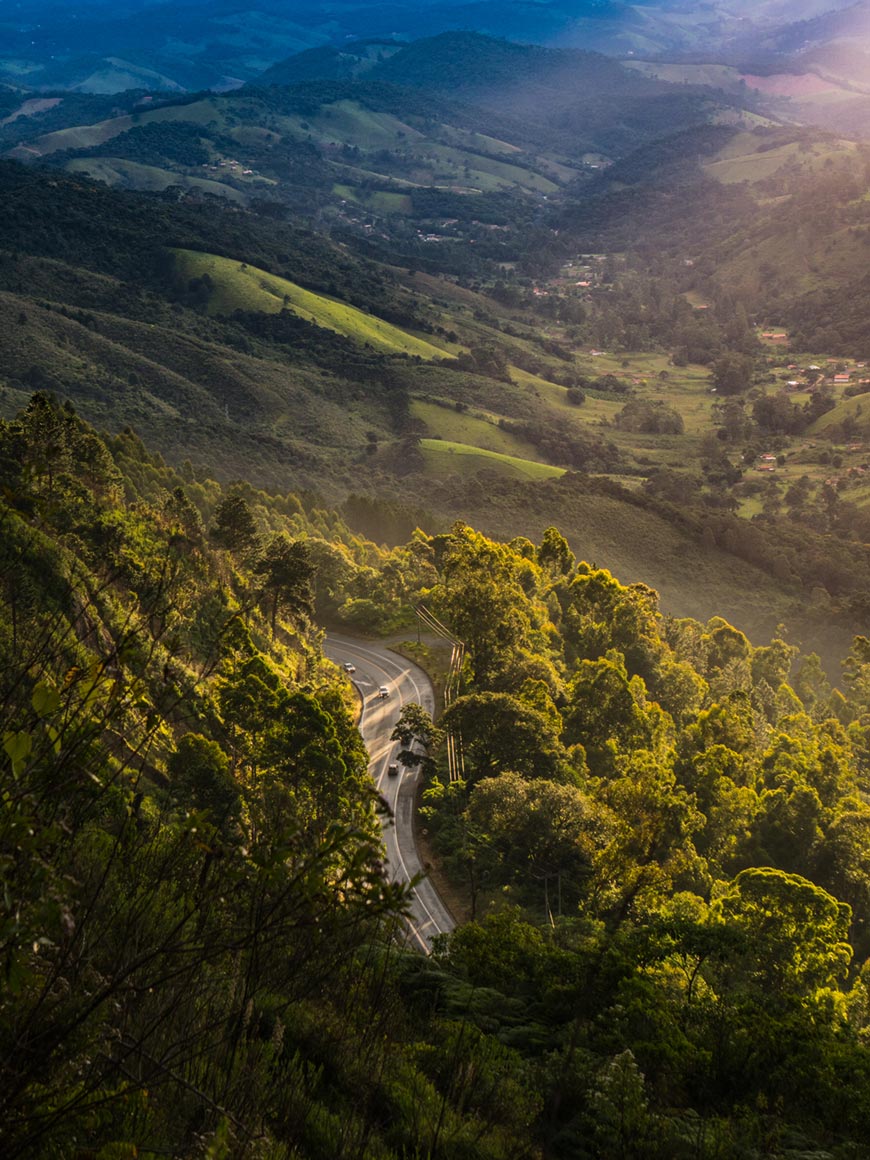
“SII” with the E 55-210mm f/4.5-6.3 OSS at f/8 1/100 ISO320 @ 55mm.
Finally for videos the BIONZ X delivers a variety of results. If you don’t mess with any adjustments and shoot with the “Standard” Creative Style and the Picture Profile set to “OFF”, the files are extremely sharp and vivid, with reasonably low contrast (for post-processing) albeit easily clipping the highlights under too much light. To extract the sensor’s full dynamic range you must use one of the built-in Picture Profiles, with options for PP1 (Movie Gamma), PP2 (Still Gamma), PP3 (ITU709 gamma), PP4 (ITU709 color), PP5 (Cine1 gamma), PP6 (Cine2 gamma), PP7 (S-Log2 gamma), PP8 (S-Log3 gamma and S-Gamut3.Cine color), PP9 (S-Log3 gamma and S-Gamut3 color); the last three using at least the native ISO800. I strongly recommend testing each profile prior to shooting (don’t go using any profile without proper knowledge to what it does), together with your colorist’s workflow; always explore the camera’s capabilities for the best results.
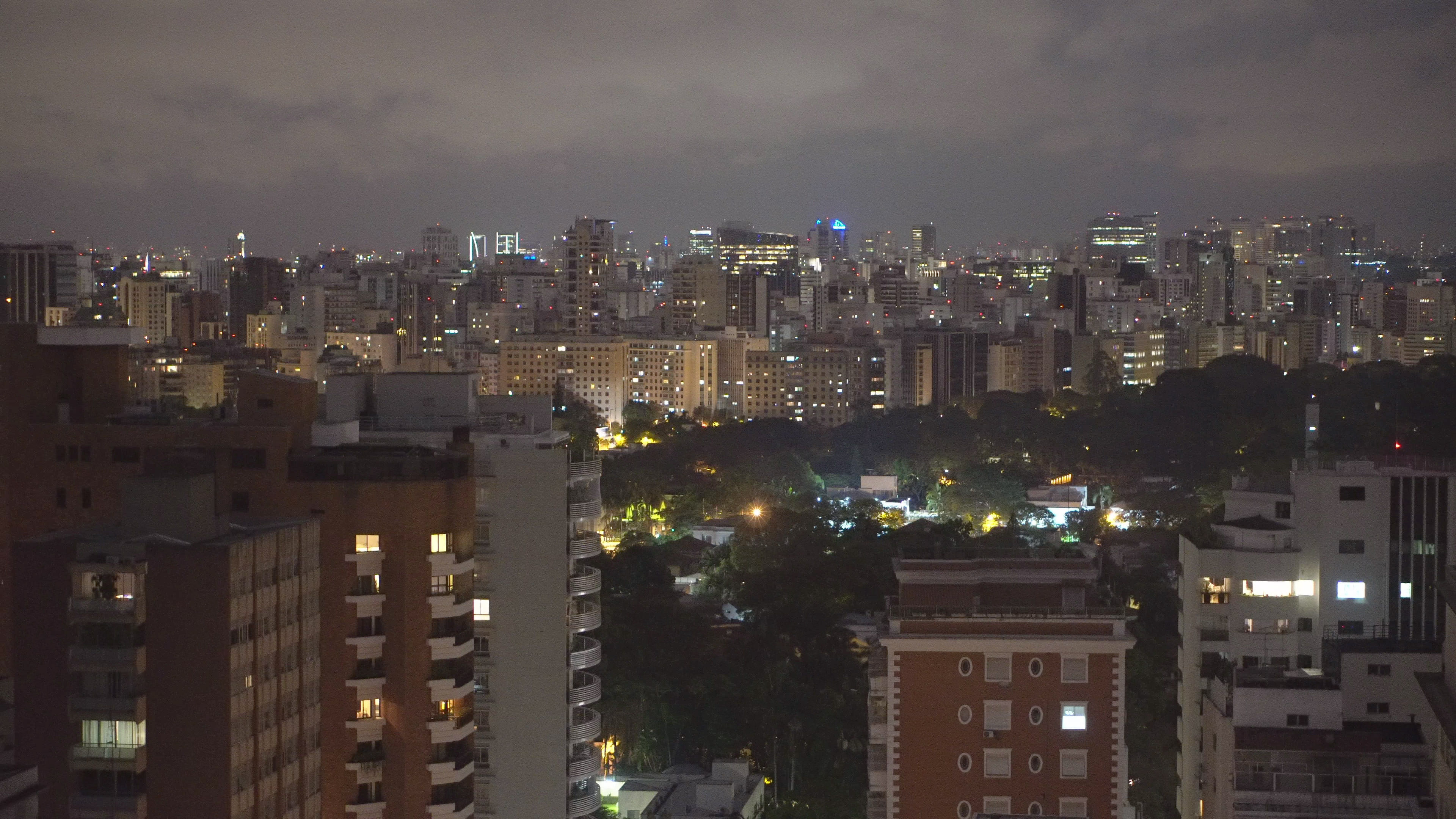
“SP” with the E 50mm f/1.8 OSS at 2160P24 S35mm f/2 1/30 ISO3200, NR: “Off”, Creative Style “Standard” and Picture Profile “Off”; click for larger.
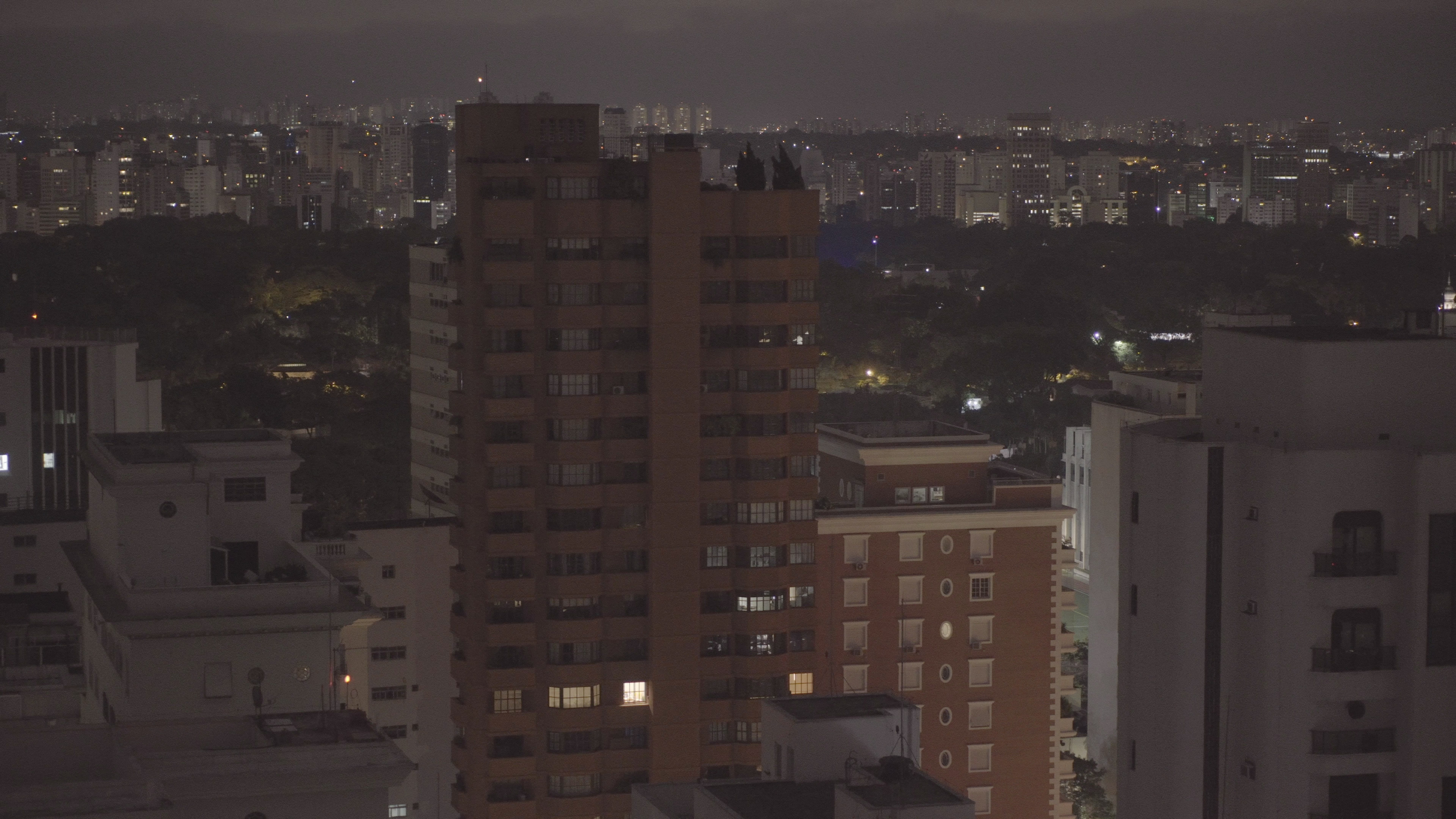
“SPII” with the E 50mm f/1.8 OSS at 2160P24 S35mm f/2 1/30 ISO12800, NR: “Off”, Creative Style “Standard” and Picture Profile “PP7”; click for larger.
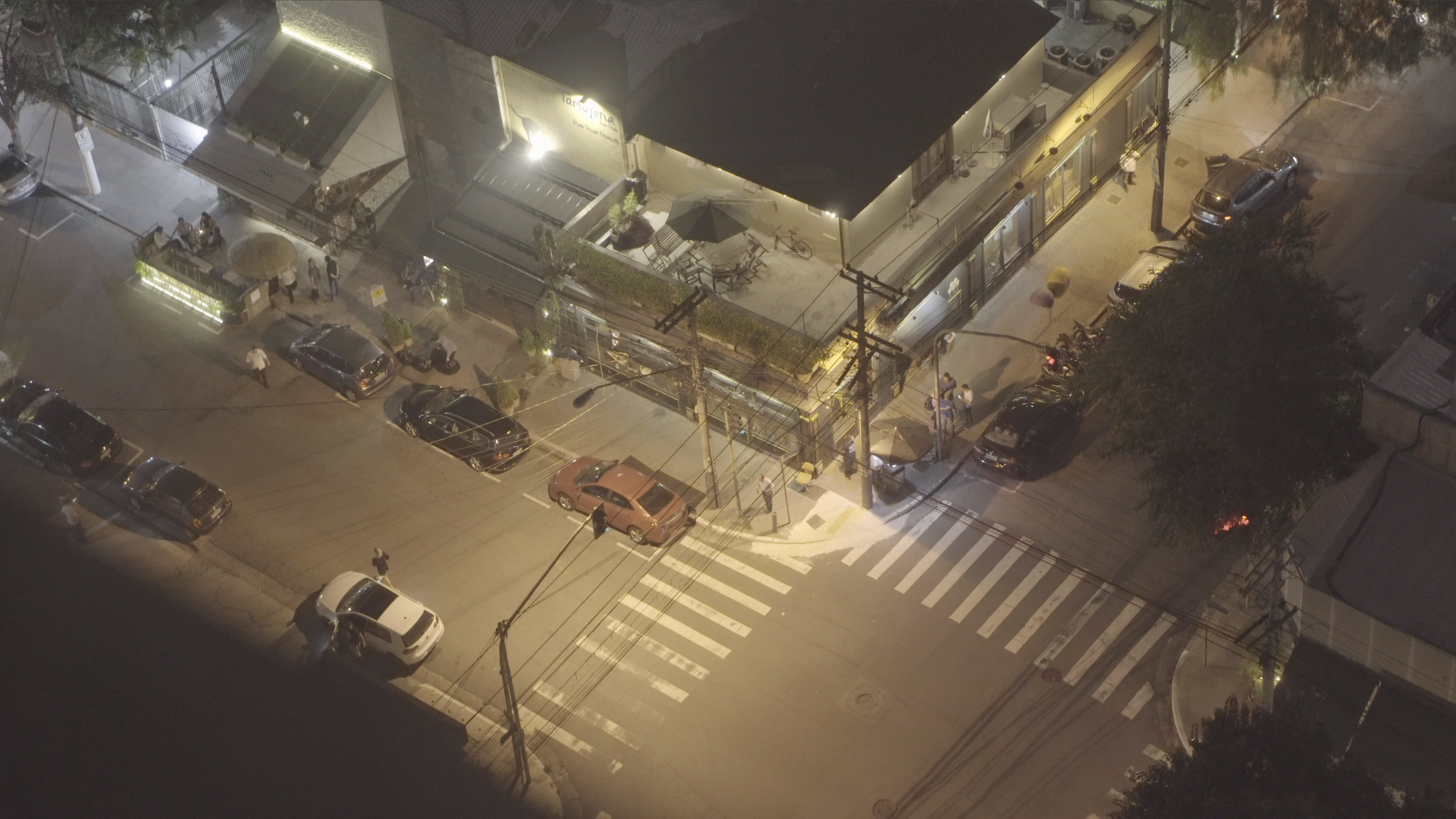
“SPIII” with the E 50mm f/1.8 OSS at 2160P24 S35mm f/2 1/30 ISO12800, NR: “Off”, Creative Style “Standard” and Picture Profile “PP7”; click for larger.
The Sony A6500 is a step ahead the A6300, that already tries a lot on a diminutive camera body, delivering a reasonably incomplete product, asking for updates on every angle. While some features were delivered by Sony (better build, touch screen, front-end LSI, less heat), unfortunately they couldn’t help themselves in trying still too hard is still too little space; failing once again to deliver the ultimate APS-C. The A6500 is still too complicated, far from the amateur’s reach, and still not the “low-cost-full-featured-package” some professionals dream of. While the fast shooting speed is interesting, the questionable auto focus performance still requires way too much contrast (and light) to work, also missing the subject (and the point) very ofter when used in continuous mode. The 4K resolution in cool but the camera can overheat under longer captures, with an internal stabilizer that just doesn’t work; the jittered capture ruins everything you did in front of the camera. And the image sensor is old news: great details from a 24MP APS-C, but now behind the pixel-perfect APS-C Nikon D500. For US$1398 the A6500 is indeed a fair upgrade over the A6300, not so expensive like top-of-the-line APS-Cs like the Fuji X-T2, the Canon EOS 7D Mark II and the D500; but not under-delivering as well. So it’s not the ultimate APS-C one might have hoped, but it’s good enough. Until that camera arrives, take the A6500 and nice shooting!